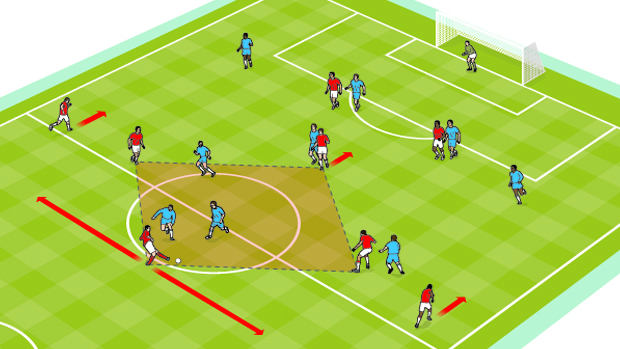Forge a midfield diamond
Get it right and you’ll be able to play between the lines, says former Carlisle manger Greg Abbott

“Any formation depends on the players you have available as you can’t have a system that doesn’t suit your players.
But playing with a midfield diamond enables you to pass the ball and play between the lines of back four and midfield, as well as midfield and attack.
The key to doing this successfully is moving the ball quickly and keeping a high tempo. You also need the full-backs to join in if it’s going to work, but it’s important not to overcommit and get too many players ahead of the ball.
The diamond needs a mixture of players who can defend and attack. You need someone with pace and creativity at the head and someone who can get between your centre-forwards when the ball’s coming in from out wide.
Get FourFourTwo Newsletter
The best features, fun and footballing quizzes, straight to your inbox every week.
The two midfielders in the middle of the diamond could be ‘normal’ midfielders but at the base of the formation you need someone who’s comfortable on the ball and has a good football brain, who can push and prompt when you have the ball and also when you lose it.
Their job is to almost to marshal the midfield side-to-side, rather than back to front. The good thing about such a set-up is you’re never outnumbered in midfield, but there is a danger of getting over-run if you’re playing a team with a lot of pace on the wings and with attacking full-backs.
As such, it’s important that you get players out wide to negate this threat. When you lose the ball you have to get your men to engage the opposition full-backs.”
Related article: Playing with three attackers
Coping with a physical side at set-pieces
Abbott on how to avoid being out-muscled
1 Be flexible
Sometimes you have to be brave enough to slightly change the system you’re playing in order to deal with the opposition’s threat. If you’re going away from home and you know you’re going to come under pressure in the air, you might need to include your most physical players, even if they aren’t the best technically.
2 Playing for keeps
If you are up against genuinely physical sides then you have to make life as hard as possible for them. This starts with your goalkeeper – he really needs to come out and command his penalty area because that sends out the message that you’re not going to be kicked around.
3 Target the big man
It’s difficult to go two versus one because you’ll run out of players all over the pitch. But if the opposition have a player that’s really dangerous in the air get two defenders – one in front, one behind – to do a job on him. That means the ball will have to be perfect for him to get on the end of it.
